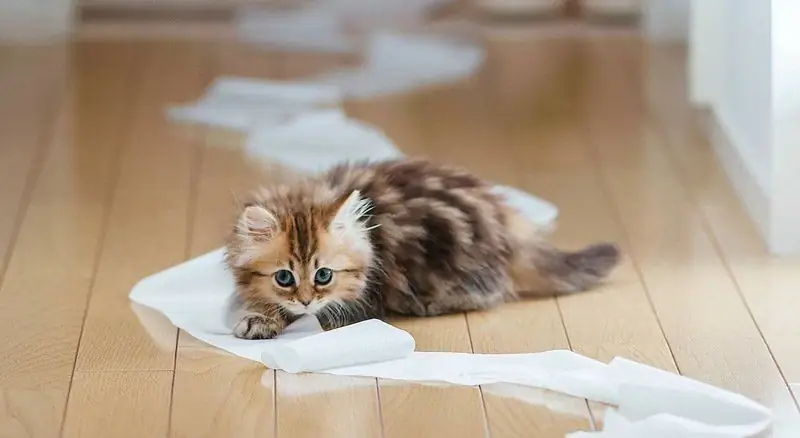
Table of contents:
- Author Bailey Albertson [email protected].
- Public 2023-12-17 12:53.
- Last modified 2025-01-23 12:41.
Fighting cat "surprises": how to return your pet to love the litter box
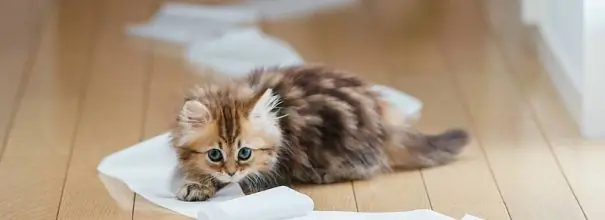
Pets, like humans, also get sick, stressed, protest, and exhibit a wide range of emotions. Getting into the house of its owner, the kitten usually learns quickly and accepts the rules that are dictated to him. But everything does not always go smoothly, especially when it comes to relieving needs: and a little pet sometimes flatly refuses to accept the tray offered to him, and an already adult cat may begin to ignore going to the toilet in a strictly designated place. In such a situation, only two questions matter - why is this happening and how to fix everything.
Content
-
1 Why cats shit in the wrong place
- 1.1 Illness
- 1.2 Manifestation of protest
- 1.3 Adaptation and stress
- 1.4 Improper toilet organization
- 1.5 Video: why cats start going to the toilet in the wrong place
-
2 Methods for solving the problem
- 2.1 Practical impact
- 2.2 Temporary isolation
-
2.3 Scare away method
- 1 People's Councils
- 2.3.2 Veterinary drugs
- 2.3.3 Reviews of anti-cough sprays
-
3 Rules for choosing a place for a tray
3.1 Video: where to place the cat litter box
Why cats shit in the wrong place
By systematically detecting puddles and excrement outside the tray, the first step is to figure out why the pet is doing this. The easiest option is that a kitten that has entered a new home is not yet accustomed to the litter box and at the stage of adaptation cannot quickly react to the owner's rules. Here it is important to correctly apply methods for training a pet. But if everything was fine with the toilet, but one "fine" day the situation changed, then everything is far from so simple.
Disease
The first thing a loving owner should check is whether everything is in order with the cat's health. Problems that cause pain during urination or defecation (cystitis, constipation, urolithiasis, colitis) form negative associations in the animal with the litter box - this is where the cat experiences pain. For this reason, the pet begins to look for another secluded place to fulfill its needs, where painful sensations will not overtake it (in this case, "surprises" will be found by the owner each time in a new place). Additional symptoms will help to suspect an ailment:
-
With inflammatory processes in the urinary system in a cat, there is a decrease in appetite, frequent trips to the toilet in a small way, which are accompanied by groans and restless behavior. Depending on the form of the disease, solid particles, blood, pus and other impurities can be found in the urine.

Cat Pose for Difficulty Urination The tense posture of the pet tells about the discomfort during urination.
- With inflammation in the intestines, the stool changes its appearance (it can be unformed, frequent, with blood impurities, with an atypically pungent odor).
Manifestation of protest
In the case of cats, the likelihood is high that ignoring the litter box is an expression of character. Likewise, a pet can show different feelings:
- Jealousy. The territory of residence for a cat is the place where it feels comfortable and protected, and when guests, new pets or even a child in the family suddenly appear, the animal can react vividly to this. Rejection is often associated with jealousy of the owner - the accents of attention have shifted, and the cat is trying in every way to turn them on itself.
-
Resentment against the owner. Any aggression and rudeness towards an animal, as well as a lack of attention can be a reason for resentment. Revenge and the desire to pay attention to the injustice that has arisen are often manifested by the appearance of puddles and excrement in the most unexpected places - under the bed, in personal belongings, in shoes.

Sad cat Cats can be offended by their owners for both careless handling and lack of attention
- Leader application. This is true primarily for sexually mature cats, they may strive to take a leading position in the house, considering themselves leaders and marking the territory to make it clear to the rest.
Adaptation and stress
Cats often react sharply to major changes in their usual life. Severe stress is caused by:
- long absence of the owner;
- the emergence of a new owner;
- change of habitual place of residence.
Such situations take time for the pet to adapt. At the stage of getting used to the changed conditions, any form of rejection is possible - refusal to eat, aggressive behavior, ignoring the tray.
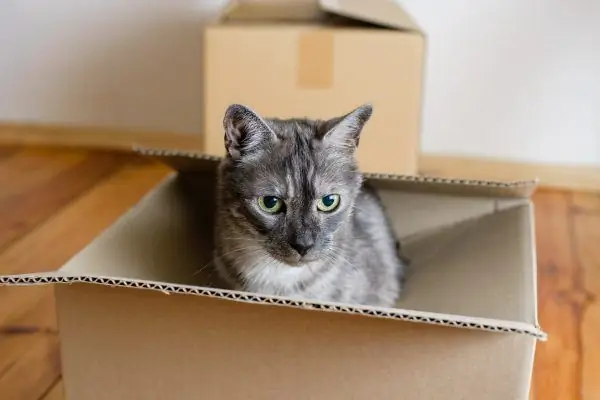
Cats have a hard time changing their place of residence, for them it is a lot of stress, and the reaction may well be manifested by ignoring the litter box
Improper toilet organization
The place for the cat litter box should first of all be comfortable for the animal - the pet should feel calm and protected when visiting the toilet. If the place was ill-conceived, the litter box is poorly looked after, or there are other factors deterring the cat, then excrement and urine will appear everywhere, but not where the owner suggested. A fluffy pet may not be satisfied with:
- The tray itself. If the cat is simply uncomfortable in the litter box, then she will not visit it. The toilet may be too spacious or small, it may be inconvenient to enter because of the high sides, or it may not be possible to fully realize your burial instinct.
- Tray location. If next to the toilet there is a resting place for a cat, a bowl of food, then the tray will definitely be empty. Also, there should be nothing distracting near the tray, for example, a working washing machine, an automatic air freshener, a vacuum cleaner and other objects that terrify a cat. This will violate the basic sense of security and prevent the litter box from being recognized as a place of quiet retreat.
- Dirty tray. Cats are clean animals, and most of them will not even go to the litter box if there is already at least one puddle in it.
-
Filler. The filler for the toilet first of all allows the owner to solve problems with the smell and convenience of disposing of animal waste products, but do not forget about who it is intended for. The cat may ignore the litter box simply because the litter is uncomfortable for him. For example, the popular today silica gel under the cat's paws emits a specific crunch, and when urine hits the crystals - a slight hiss, which can scare a cat away from such a toilet.

Fillers in the tray A domestic cat may not be comfortable with litter in the litter box, leading to puddles and faeces in inappropriate areas.
Video: why cats start going to the toilet in the wrong place
Problem solving methods
Most of the reasons that make a cat want to relieve themselves in the wrong place are related to her anxiety and discontent. Therefore, first of all, it is worth working out all aspects of the animal's experiences:
- If there is a suspicion that the cat is feeling unwell and it is because of the pain that it cannot find a place for itself for comfortable emptying, then it is better to immediately contact the veterinarian. After recovery, the adult animal will again be able to accept the rules established in the house.
- The tray should be emptied regularly and kept clean. Depending on the filler, faeces and urine should be removed either immediately after they appear, or at least once a day.
- If the problem appeared after changing the filler, it is worth returning to the previous option.
- If the cat reacts so vividly to the appearance of guests in the house, it is worth taking care in advance that she has the opportunity to hide in a secluded place, retire and feel safe. You should not force the animal to contact new people, especially if it clearly does not want to.
-
If you are planning a move or a long trip that can cause severe stress to your cat, you need to worry about the condition of the pet in advance. On the eve, you can use special sedatives (drops "Cat Bayun") or behavior modulators with pheromones. They will help the cat to feel comfortable in the new territory (spray, collar, Feliway drops).

Tablets "Cat Bayun" Tablets "Cat Bayun" will help the cat adapt to new conditions and minimize the stress of moving or long travel
- It is necessary to devote time to the animal daily, even if conditions have changed, and there are less free minutes. Regular communication with the owner will be an excellent prevention of attention deficit and resentment.
If all possible reasons are eliminated, but the animal still continues to leave unpleasant surprises for the owner in the wrong places, it is worth resorting to weaning techniques.
It is worth considering that all the described means cannot give one hundred percent guarantee that the animal will stop shitting - the cat can ignore a specific method or simply find another place for itself. You should always start by eliminating the cause of such behavior, and only then deal with its consequences.
Practical impact
The method of practical influence is used at the stage of the initial training of a kitten to the litter box, but it will also be relevant for an adult pet that has gone astray. The bottom line is to constantly communicate with the animal and demonstrate to him the rules of the house:
- The owner must monitor the animal, because you need to act as soon as there are signs that the cat is going to relieve itself. For kittens, this is noticeably more pronounced, but adults also retain similar habits - they begin to spin, sniff at the selected place, and dig with their paws.
- The cat needs to be transferred to the litter tray, to demonstrate the characteristic movements of its paws - to scratch the filler, simulating instillation.
- If the animal has time to empty, feces or urine should be collected with a piece of toilet paper and transferred to the tray, showing the cat this.
- As soon as the cat herself descends on the tray, she needs to be praised, offered a treat.
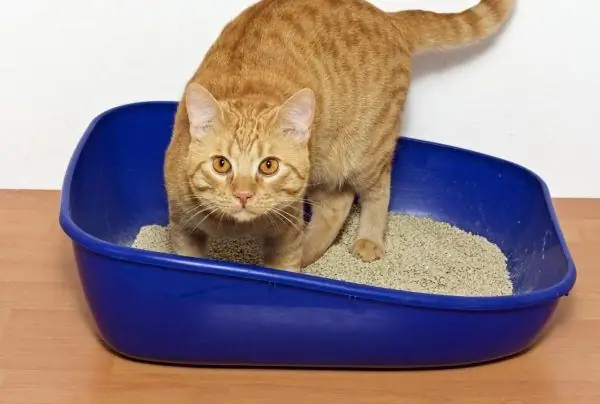
Demonstrating a litter box to a cat when trying to go to the toilet is one of the most effective methods of training both kittens and adult animals.
This approach will take a lot of time and patience from the owner. The main thing is not to beat the animal, punishing it for a mistake. This will only add to the problems - the cat will simply be offended by the owner, and in addition will perceive the tray as hostile, because it is because of it that she is hurt.
Temporary isolation
The isolation method belongs to the category of radical, since it implies a temporary restriction of the animal's freedom. It is often used when changing residence, so that the cat quickly gets used to the new location of his toilet. But for kittens, this approach is better not to apply.
As part of the method, the cat is shown his toilet and locked in the same room with him. The room must be prepared in advance - remove all those items that can attract the pet's attention to cope with needs. The cat is released from forced isolation 3-4 times a day to eat. Usually a few days are enough to get the result, during which the animal still needs to be paid enough attention.
Scare away method
If the cat has chosen one or several specific places for going to the toilet past the litter box, it is worth using the scaring method - with the help of special compositions, make the animal stop loving a self-organized toilet.
People's Councils
In places where the cat constantly goes to the toilet, it is quite difficult to remove the smell that re-enticing the animal. Given the pet's acute sense of smell, you can resort to folk remedies that will make the wrong places uncomfortable:
- A weak solution of potassium permanganate or a solution of vinegar (proportion 1 to 3 parts of pure water). The funds will destroy the uric acid crystals contained in cat urine, which will reduce the attractiveness of the place chosen by the pet for emptying, and also scare off with its smell, which will persist for a short time.
- Soda gruel. This recipe is perfect for finding "surprises" on carpets and fabric surfaces. Dilute baking soda with water until a mushy consistency is obtained and apply to the stain. After drying, the place needs to be vacuumed - the powder will take away the unpleasant odor.
- Citrus. Citrus peels have a pronounced odor that is unattractive to most felines. Therefore, in order to prevent the appearance of puddles and feces in the places chosen by the cat, it is worth spreading the skins of the fruit.
Veterinary drugs
To treat the places where the cat is in the habit of going to the toilet, you can use specialized purchased products:
-
Biospray "Antigadin", which contains enzymes and fragrances not disclosed by the manufacturer. The spray has a specific scent that scares the cat away from the treated area. The cost of a bottle of 150 ml is up to 200 rubles.

Antigadin spray Antigadin - a spray designed to scare an animal away from a place not intended for going to the toilet
-
Nature's Miracle Spray. The drug destroys odors at the treatment site and leaves behind a pronounced aroma of lemon and cinnamon, which forces the cat to bypass such areas. The average cost of a 700 ml bottle is 600 rubles. Consisting of:
- sodium lauryl sulfate;
- cinnamon oil;
- lemongrass oil;
- water;
- lemon acid;
- sodium benzoate.
-
Spray Ms. Kiss "Weaning off crap." It is used for adult cats and cats in order to scare them away from the places they should not be used for. The price of a 200 ml bottle is 200 rubles. The product contains:
- water;
- solvents;
- methylnonyl ketone;
- fragrances;
-
preservatives.

Spray "Weaning off crap" Spray "Weans out crap" has a pungent odor, which allows you to wean an adult cat or cat to relieve himself in the wrong place
Reviews of antigadin sprays
Rules for choosing a place for a tray
So that the animal does not ignore its tray, it must first of all be comfortably positioned. To do this, you should follow a number of rules:
- you can not place the tray next to the food intake;
- objects that frighten the pet should not be located near the cat litter;
- the place should be secluded so that the animal can quietly retire, not relieving himself in full view;
- the place of the tray should not be brightly lit.
Video: where to place the cat litter
A cat can shit both because of poor health, and deliberately, wanting to take revenge or attract the attention of its owner. Dealing with a problem should begin with finding and neutralizing its cause, and if unpleasant surprises continue to appear, then weaning methods can be used. What to choose depends on the capabilities and desires of the owner, it can be either constant observation and correction of the cat's behavior, or the use of veterinary formulations.
Recommended:
How To Wean A Cat From Dry Food: Basic Weaning Rules And Common Mistakes, Advice From Owners And Veterinarians

When is it necessary to transfer a cat from dry food to natural food. Possible difficulties. Stages of translation. The main mistakes when changing the diet. Reviews
A Cat Or A Cat Sneezes: Reasons (including Why A Kitten Has It), What To Do, Expert Recommendations
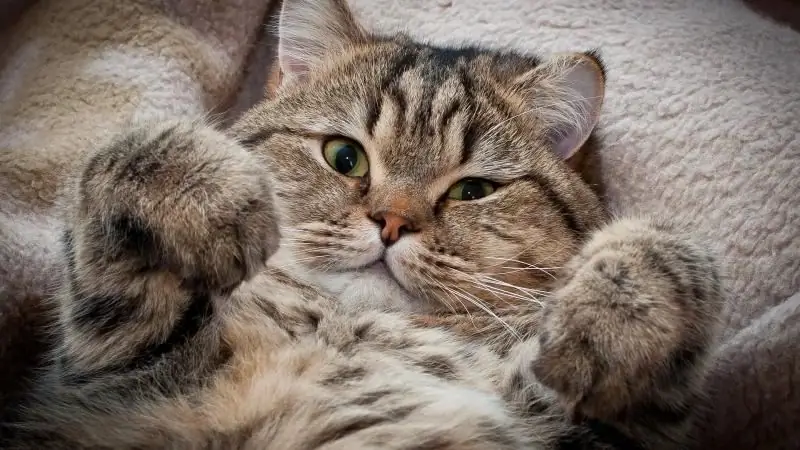
How cats sneeze. Normal sneezing. Sneezing as a symptom of disease. When to see a doctor immediately
Blood In The Feces Of A Cat Or Cat: Causes (including When The Kitten Cries) And Treatment, Expert Recommendations
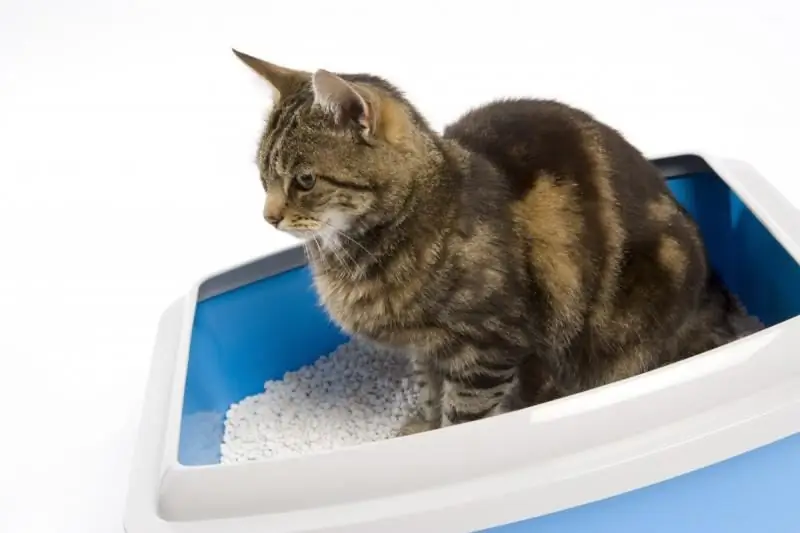
Blood in the stool in cats: what it looks like, with what diseases it occurs. What to do when detected. Methods for establishing the disease. When a doctor is urgently needed
How To Wean A Cat Or Cat To Shit In The Wrong Place: Expert Advice On Weaning Kittens And Adult Animals, Folk Remedies
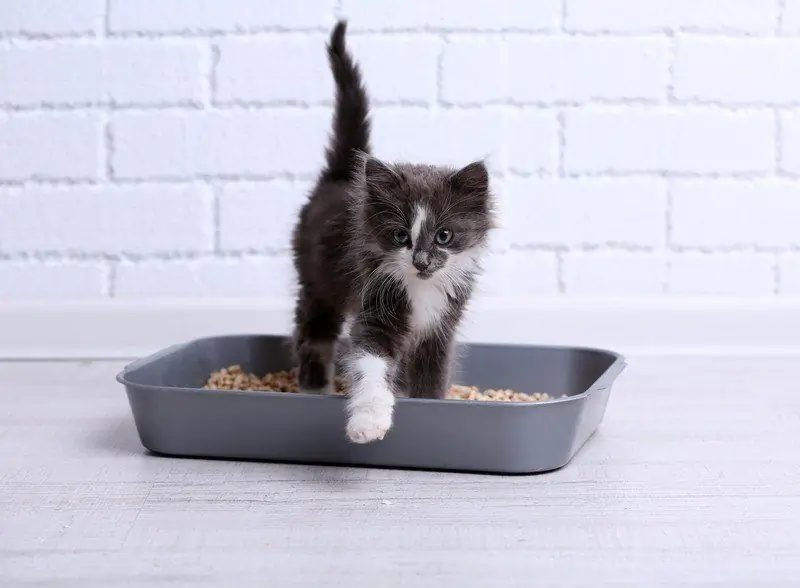
Why does the pet refuse to go to the litter box? How to calculate the reason for indirect evidence. What to do to stop the animal from shitting in the wrong place
How To Wean A Cat Or Cat From Scratching And Biting, What To Do If A Kitten Scratches And Bites On The Arms And Legs All The Time Or When Stroking It
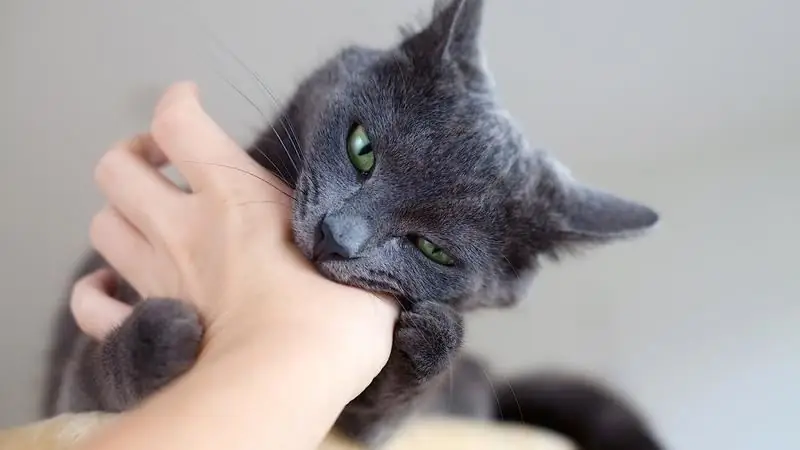
Why do cats scratch and bite? What to do to make the animal more peaceful. How to quickly wean a cat from bad habits
